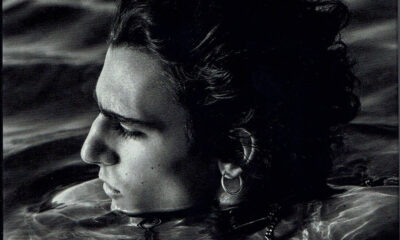Music
What Makes A Scary Song? Three Things Every Spooky Tune Needs
Genuinely scary sounds, an unsettling story, or just party jams with eerie sound effects?
Now that the season of spooks is fully upon us, many of us will rely on playlists to get into that sinister Halloween spirit. (In fact, CMN’s weekly playlist, CMN Vibes, has already gotten into the spirit with this timely playlist.)
These can be either songs that have genuinely scary sounds, songs that tell an unsettling story, tracks with titles connected to something spooky or just party jams with eerie sound effects.

But what qualities make us call a song scary? What are the disturbing sounds that provoke a strange feeling in the pit of the listener’s stomach?
When you break down Halloween songs, a classic like 1962’s “Monster Mash” doesn’t sound a lot like “Dragula” by Rob Zombie, yet they both fit the bill of spooky season track pretty well.
In keeping with the spirit of the season, here are some elements that demonstrate how to turn a typical song into a Halloween killer:
Subject Matter
The first way to get onto a Halloween playlist is for a song to have dark subject matter. Include references to serial killers, death, or horror movie classics.
Think “Werewolves of London” by Warren Zevon, “Psycho Killer” by Talking Heads, or “Don’t Fear the Reaper” by Blue Oyster Cult.
All these songs tackle dark themes, but are delivered with friendly instrumentation. Sure, the song is a bit scary, but it sounds like your typical hit of the time. These songs are great because they help to expose people to these frightening tales without having to sacrifice the tunefulness.
Instrumentation
While subject matter plays a significant part, eerie instrumentation is the part of a song that can really make a listener’s skin crawl. We’re talking about songs like “Black Sabbath” by Black Sabbath, “Kim” by Eminem, or “The Number of the Beast” by Iron Maiden.

Metal and hip hop are prime candidates for this category because of their tendency to favor harsher sounds. The backing track to “Kim,” for example, has samples that sound like they were ripped straight out of a horror film score.
Sometimes it even comes down to the types of notes you play. In Black Sabbath’s case, the song features what’s called a tritone, a harmony that musicians have tended to call “the devil’s chord.”
The songs in this category take this extreme instrumentation and combine that with dark lyrics, with Maiden and Sabbath talking about the occult and Eminem musing on the real-life horrors surrounding a domestic abuse situation. You start to notice the dark lyrics of these songs, but now you’re uneasy, like the music is tapping into something truly sinister.
But we’re not out of the woods yet…
Atmosphere
If the dark subject matter made you take notice and the instrumentation made you feel uncomfortable, then the atmosphere behind a track is what makes it truly horrifying.
Songs like these include “Closer” by Nine Inch Nails, “Frankie Teardrop” by Suicide, or even the Joker’s main theme from The Dark Knight soundtrack. These songs are all genuinely terrifying, but it’s hard to pin down what exactly makes them scary.
And that’s what makes these tracks amazing.
The driving force behind these songs isn’t a catchy guitar line or lyrical hook. These songs try to put the listener in an unsettling environment. Music has that the ability to transport your mind somewhere else when you, and these songs play with that idea by making that environment extremely disturbed.
“Closer” does this by giving you the feeling of being locked in an abandoned house with Trent Reznor talking about his sexually motivated tendencies. The eeriness may also be helped by the fact that Reznor recorded this song at the same place where Charles Manson’s family murdered Sharon Tate in the 60s.
On the other hand, “Frankie Teardrop” checks the other boxes with cold synthesizer ambience and the story of a man who kills his family, but what puts you on is the extended break in the middle of the song. It’s almost as if the story has been told, but they let the idea of a murderer sink in just a little bit more.
The Joker’s theme is the purest example of this because of its lack of lyrics. The track features primarily synthesized sounds which consist of mostly noises rather than outright instruments. It races along, as if it’s about to hit a massive high note. But after a while, the sounds keep ascending and get become more massive sounding.
That’s when you realize that the massive end note is not going to come. It keeps you in that tense and refuses to let go. Composer Hanz Zimmer really uses this opportunity to put you into the mind of a maniacal terrorist and created a piece that is truly menacing.
For Halloween songs, there aren’t really a straight set of guidelines one must follow to create a scary track. Everyone holds Halloween songs in high esteem for different reasons, based on their personal interpretation of the song.
As tastes continue to change and different genres become popular, there will always musicians that are willing to comb through the twisted side of their brain and come out with beautifully horrific music.
If you obsess over singers and bands, and are one of those people who make a playlist for every occasion, join CMN’s Music Journalism Course and get real-time experience, intense feedback on your writing, exposure to music industry insiders, and a great place to display build your portfolio. Get all the details on the Music Journalism Course here.











